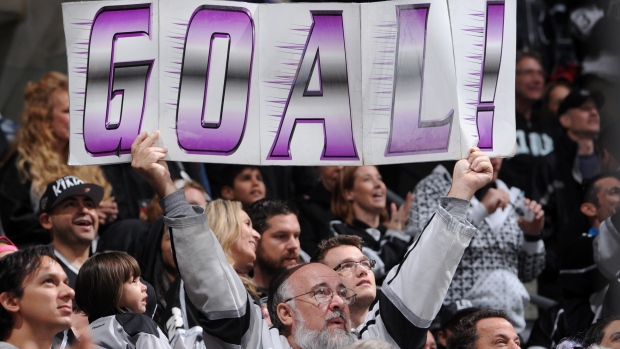Nov 12, 2015
Three ways to increase scoring in the NHL
There are many ways to increase scoring in today’s NHL. TSN hockey analyst Ray Ferraro shares a few of his ideas on how to achieve that.

Goals.
Forwards and fans love them. Coaches only sort of like them. Goalies hate them.
That, in a nutshell, is the issue facing anyone looking for a unanimous view on how to increase scoring in the NHL.
The objective isn’t to find a way to get back to the days of 7-5 games on a regular basis, though that was a fun time to play in. We’re looking for 6.5 to seven goals a game - up from the current 5.3.
A 4-3 game is almost always more fun to watch than a 2-1 game. Sure, there are 2-1 games that are brilliant, but not consistently over the long haul.
There are many ways to increase scoring in today’s NHL. Here is where I would start:
First, start by calling penalties as they are in the rule book. The league should start with a committee consisting of a retired referee, a current referee, a couple of players, a coach and a general manager. The committee’s job would be to go through the rule book to update and simplify it. The current rule book is like the tax code: everyone tries to follow it, but they can’t quite figure it out.
More power plays mean more goals. It is amazing how many times it seems like there are six penalties a game. Sure officials need to have a feel for the game, but “managing the game” usually means the whistles are put away. I used to hold and hook more often as the game neared its conclusion because I knew it wasn’t going to be called. Players today do the same, and if they don’t, they should.
Second, clarify the crease rule. The implementation of video review was supposed to help make calls on goalie interference plays. All that seems to be happening is goals are disallowed more often. It’s no one’s fault, it’s just what is happening.
I have broadcast world junior and world championship games and played in three world championships for Canada. Through that exposure, I’ve grown to like the international crease rule. As soon as a player wanders into the crease, the whistle blows. The play is stopped and drops out of what I call the trap door. The faceoff is moved outside the blueline. It isn’t the rule that was involved in the Brett Hull-Buffalo mess; it’s more clear-cut than that.
It has been amazing to watch how there are several whistles early in an international tournament but far fewer as the tournament goes on and players become accustomed to the rule. I think it takes away the confusion.
Third, shrink the goalie gear. No one has ever said, “Let's make the gear smaller and who cares if a goalie gets hurt?” That is simply foolish. Almost all current NHL goalies look the same in their stances in the net. Are they all the same size? No. So how can that be? Even the biggest defender of goalies has to admit that some of these goalies look ridiculous. Inch by inch, they are stealing the net.
I played with a goalie in Los Angeles who looked like a guy standing in a barrel when he put his pants on. The sizing on the goalie pants worn by today’s netminders is crazy. Why would a goalie have pants that are flat in the front? Is it for protection? Or maybe it is to cover more surface area.
The upper-body gear is, in some cases, comical. I sat behind the net in Vancouver recently and was blown away by the squareness of Ryan Miller’s shoulders. It is impossible to imagine that this isn’t to cover more of the net. Blocking area, not just protection, is what goalies worry about. I’m sure stopping shots hurts, but so does a low save percentage.
I would attempt to work on shrinking goaltender equipment before getting to net size. Although some media people have suggested that no one knows how to change or streamline the goalies, the league actually has leads on this and is working feverishly to get to the next step. The ball is rolling downhill now.
Of course goalies feel under siege. I would too if it were me. It was interesting to see that Jonathan Quick and Jonathan Bernier believe the gear can be streamlined with no danger. Maybe the protesters and defenders are more worried about the most important stat to the position: goals against.


